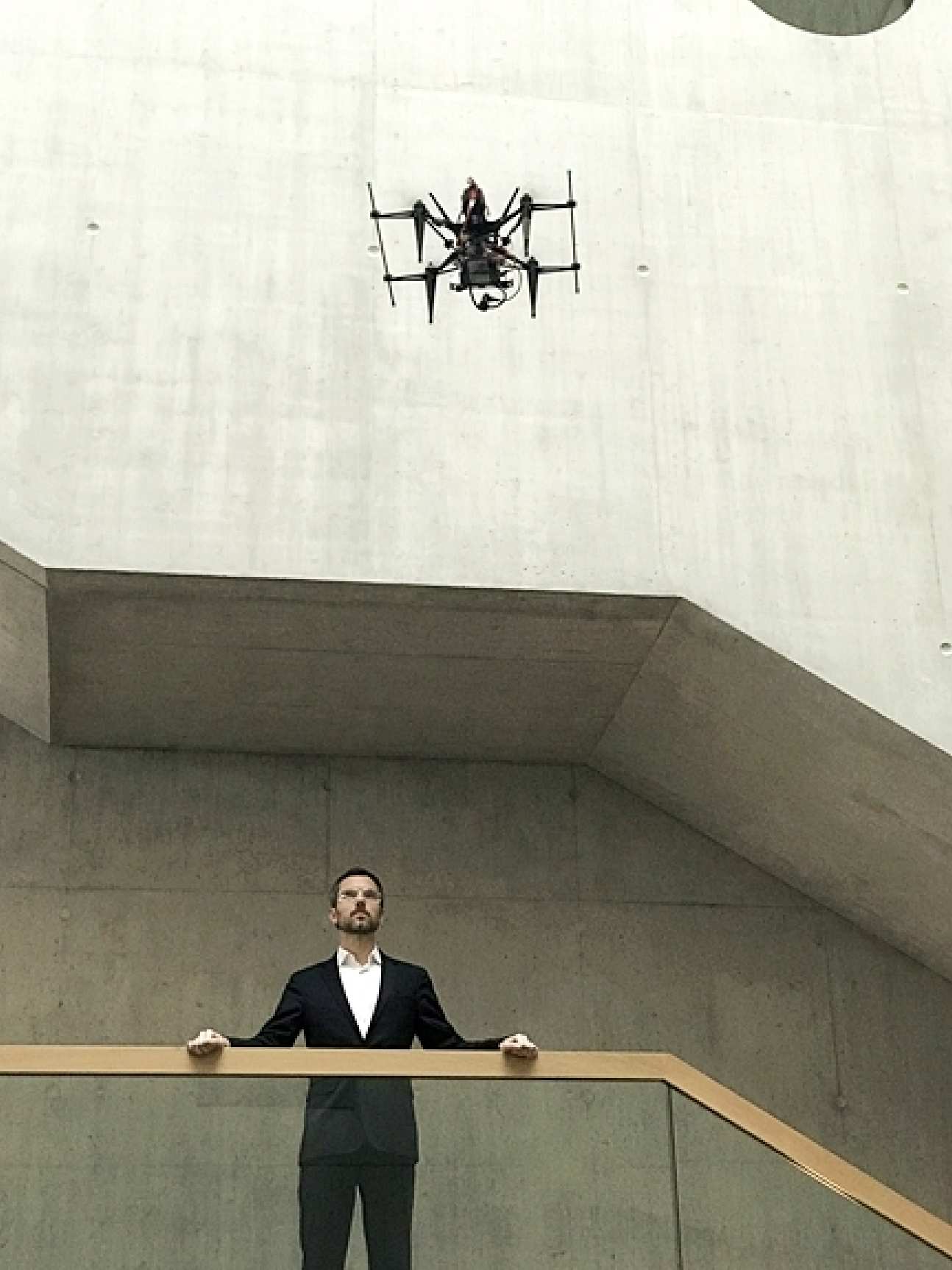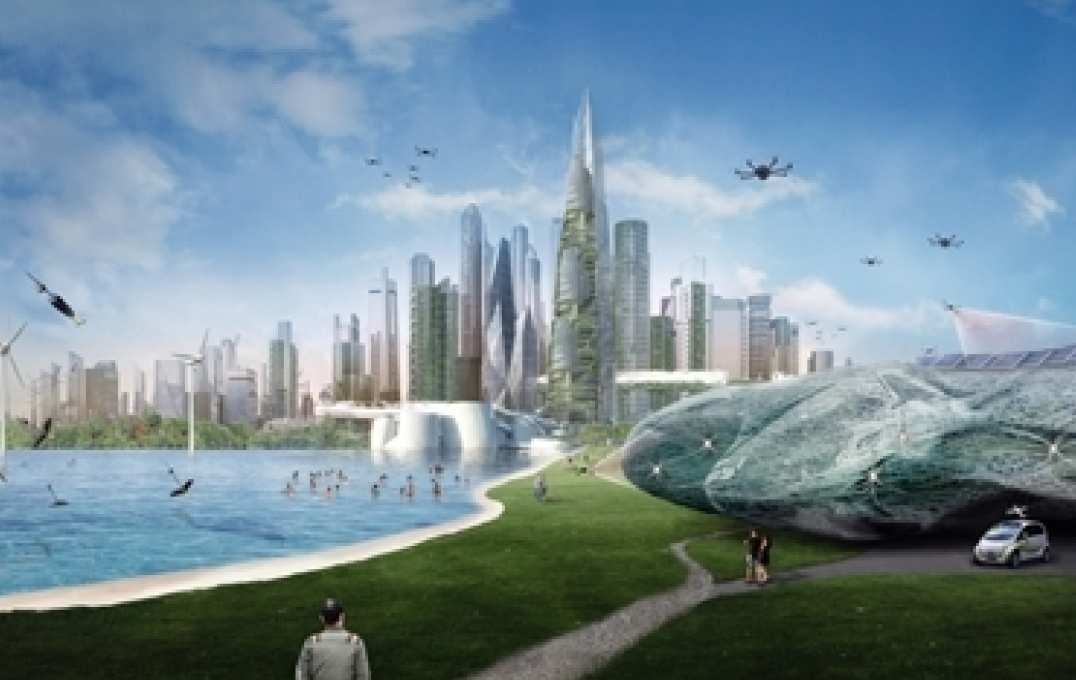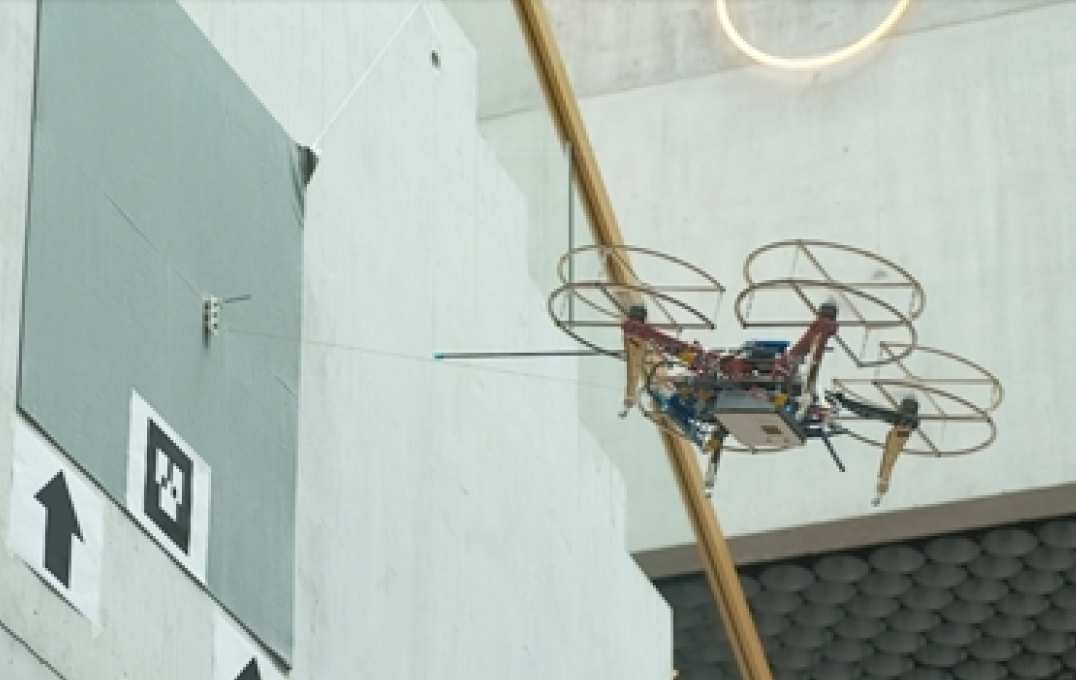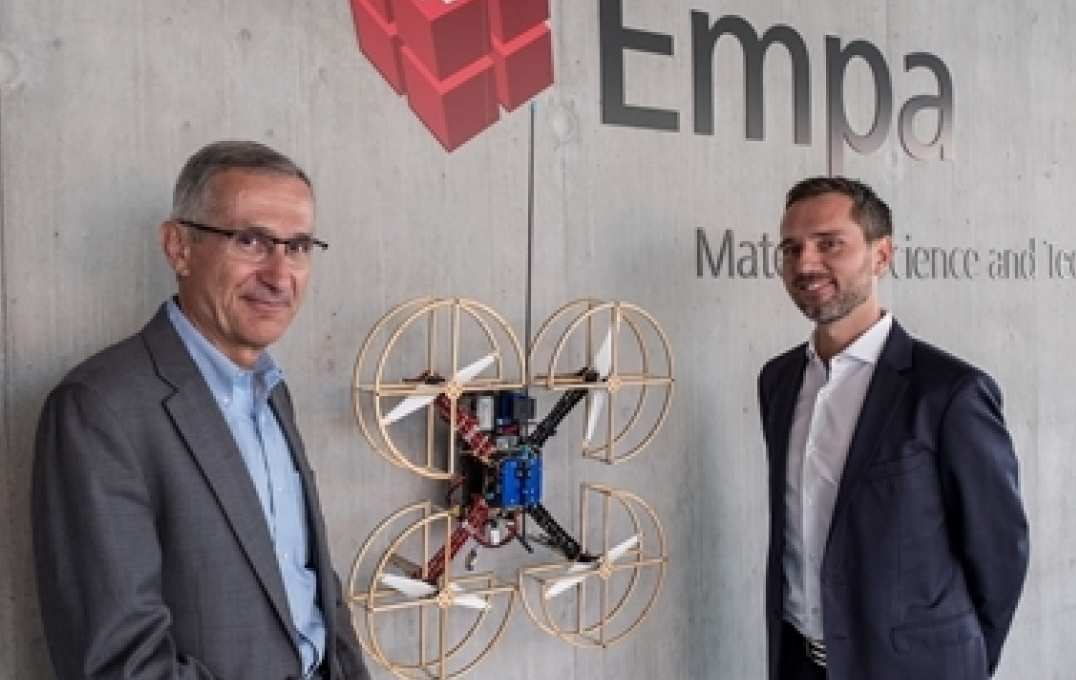Drones work alongside humans in new Imperial-led Centre
Imperial and Materials Science Institute Empa have launched a centre for independent flying robots who will carry out building maintenance work.
The drones, or flying robots, will independently roam the Next Evolution in Sustainable Building Technologies (NEST) Aerial Robotics Hub, which will be based at the NEST research building of the Swiss Federal Laboratories for Materials Science and Technology (Empa).
There, the drones will patrol the building to identify and fix minor problems alongside human inhabitants.
Future cities will be like ecosystems where robots, the built environment, and humans work together in a symbiotic relationship. This project will look at how drones can be part of this vision and interact with buildings in a safe and low-cost way. Dr Mirko Kovac Aerial Robotics Lab
Working alongside humans conducting their everyday work, the drones will use similar technology to driverless cars (simultaneous localization and mapping, or SLAM) to build 3D maps of their environment. In doing so, the drones can navigate and control themselves in real-time and avoid obstacles.
They will roam independently as permanent residents within NEST to identify and perform building maintenance and repair tasks.
The drones will help boost efficiency of building maintenance, and help to complete maintenance work in hard-to-reach, hazardous areas.
Project lead Dr Mirko Kovac, of Imperial College London’s Department of Aeronautics, said: “Future cities will be like ecosystems where robots, the built environment, and humans work together in a symbiotic relationship. This project will look at how drones can be part of this vision and interact with buildings in a safe and low-cost way.”
The drones and technology are currently being developed and tested by Imperial’s Aerial Robotics Lab and Empa.
Spider sense
The drones’ designs are inspired by nature: the flying robots will sense and  swoop on damaged infrastructure like bees monitoring and building their hive. They can also alert nearby drones to an issue to rally a team response. Like many flying animals, the drones will also be soft and flexible to minimise impact damage to the building or the drones themselves.
swoop on damaged infrastructure like bees monitoring and building their hive. They can also alert nearby drones to an issue to rally a team response. Like many flying animals, the drones will also be soft and flexible to minimise impact damage to the building or the drones themselves.
Resident drones can also hang from wire, like spiders, to reach tricky spots - saving energy that would otherwise be spent hovering.
Dr Kovac likens the fleet of drones to a kind of immune system for the building, which will work behind the scenes to look for and fix structural issues. They could also let fellow drones know about the quality of a repair job, as well as patrolling buildings and fixing damage.
We’re very excited to strengthen our European ties through this partnership...Dr Kovac’s collaborative vision will help this partnership to thrive. Professor Alice Gast President, Imperial College London
The researchers say autonomous drones could be a key component of our cities in the future. As well as human-inhabited buildings, their autonomy means they could assess other buildings and structures which are more dangerous for humans, like tunnels, mines or pipelines. Dr Kovac said: "The 'NEST' is an excellent demonstration platform for our technologies, where drones can prove themselves in the field.”
Professor Alice Gast, President of Imperial, said: “Imperial is known for its excellent collaborations. We’re very excited to strengthen our European ties through this partnership with Empa and the ETH domain.
“Dr Kovac’s collaborative vision will help this partnership to thrive.”
While Imperial’s team will work on the robotics of the drones, Empa are experts in materials science and design. The researchers hope the partnership will deliver new insights on using cutting-edge existing technology to develop the cities of the future.
Professor Gian-Luca Bona, CEO of Empa, said: “Here we can explore research, to development, to bringing it to the market – making innovation happen.”
All images credited to Empa.
Article text (excluding photos or graphics) © Imperial College London.
Photos and graphics subject to third party copyright used with permission or © Imperial College London.
Reporter
Caroline Brogan
Communications Division


